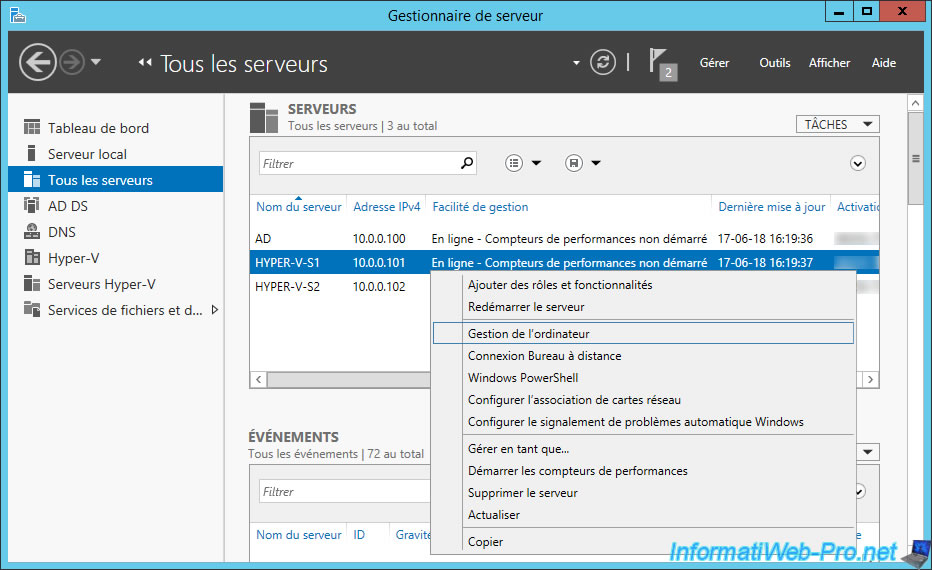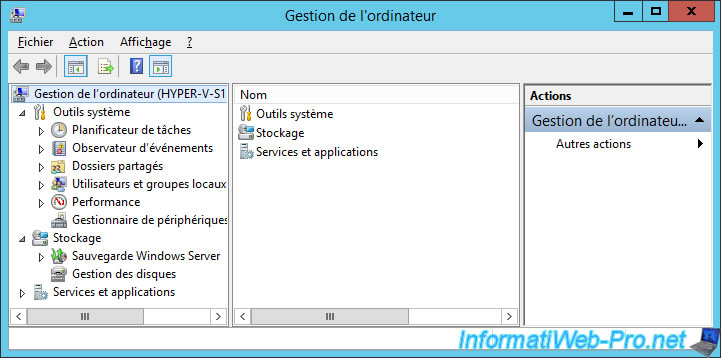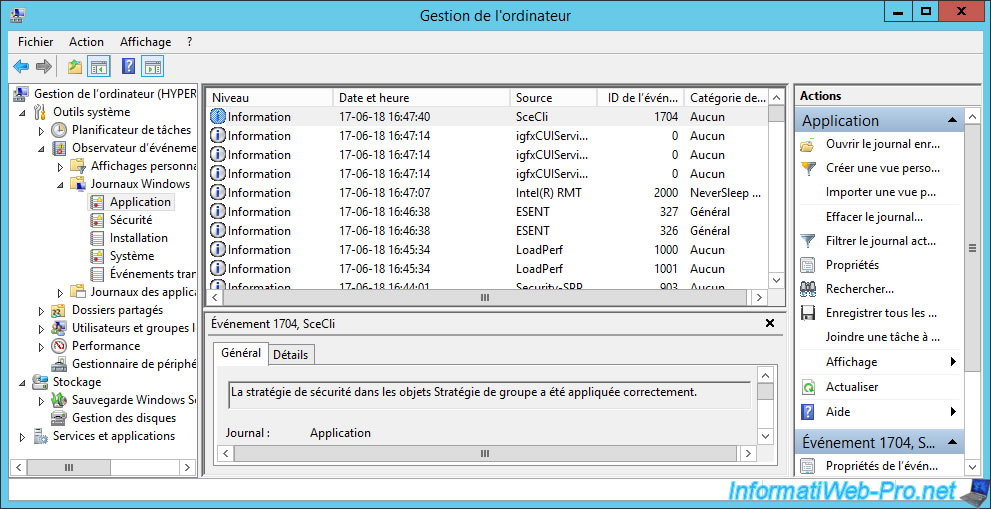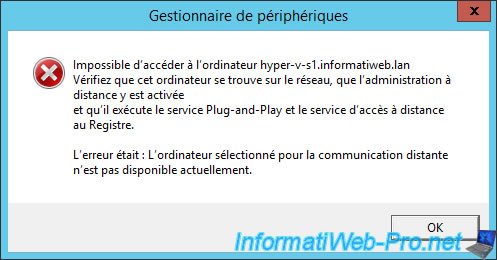Manage multiple servers with a graphical interface (GUI) remotely on Windows Server 2012 / 2012 R2
- Windows Server
- WinRM
- 10 November 2018 at 12:36 UTC
-

- 3/3
7. Manage your servers remotely
Depending on the manipulations you want to make or the settings you want to modify on your servers, you will have to use different techniques.
7.1. Computer management
In order to access Windows event logs, manage remote server users, and so on, you can use the "Computer Management" console.
To do this, select the desired remote server and right-click "Computer Management" on it.

As on the client versions of Windows, you will be able to manage :
- the scheduled tasks of Windows
- events of Windows (Event Viewer)
- the shared folders of the remote server
- users and groups
- show performance
- the Windows Server backup
- the hard disks of the remote server
- the services of the remote server

Here is an example of the event logs obtained from the remote server.

Note that, as noted on the Microsoft site, the Device Manager is no longer accessible remotely since Windows Server 2008 R2 and Windows 8.

For the disk management, if you see the "Disk Management could not start Virtual Disk Service (VDS)" message, it means that :
- you did not start the "Virtual Disk (vds)" service on the remote server
- and/or you have not enabled the "Remote Volume Management" rules in the remote server and/or source server's firewall
To solve this problem, refer to "2.2. Allow remote disk management" step of this tutorial.

If the remote server is well configured, you can manage its remote hard drives without problems.

7.2. Remote desktop
If you have enabled the remote desktop (as explained earlier) on your remote servers, you will be able to access it through the server manager.
In the "All Servers" section (or via the server group that you created in step "6. Create a server group" of this tutorial), right-click on the desired server and click "Remote Desktop Connection".
This option is useful when you want to manage the files of your remote server or you want to modify a setting that you can't modify remotely via the standard consoles (computer management, mmc, ...).

Enter the username/password of an account on the remote server (or a domain administrator).

And you can manage your remote server via the remote desktop (thanks to the RDP protocol) of Windows.

7.3. MMC console
With the Windows MMC console, you can manage different things and you can do it remotely.
To get started, go to the Windows Server home screen and launch the "mmc" program.

At the launch of it, it will appear empty.

To manage a particular parameter via the MMC, you must first go to : File -> Add/Remove Snap-in.

Select the desired component, and then click Add.
For example, the "Certificates" component to manage the certificates of the remote server.

Select "A computer account".

Select "Another computer" and click Browse.

Click Search to view the different computers on the network and select the remote server to manage.

Click Finish.

Click OK.

Now, we can easily manage the certificates of the remote server through the MMC.

7.4. RSAT tools (Remote Server Administration Tools)
As explained in a previous tutorial, the remote server administration tools (RSAT) correspond to the various consoles used to manage the different roles installed on your server.
For example, when you install the Hyper-V role, the wizard will automatically prompt you to install the "Hyper-V Management Tools" located in the "Remote Administration Tools" section of the features.
However, when you install a role on a remote server, the role and its associated administrative tools are installed only on the remote server.
As you can see in the picture below.

To manage our servers remotely, we will need to install only the desired administration tools (RSAT) on the source server (in our case : our Active Directory server).
To manage our Hyper-V server, we will install the "Hyper-V Management Tools" on our Active Directory server.

As you can see, the wizard will only install the Hyper-V administration tools.

Once the installation is complete, you can close the wizard.

Now, in the server manager, we will have the opportunity to launch the Hyper-V Manager for our Hyper-V servers.

In the "start menu", we will also find the "Hyper-V Manager" shortcut.

For the moment, the Hyper-V Manager is only connected to a server.
To manage both Hyper-V servers at the same time, simply go to : Action -> Connect to the server.

Select "Another computer" and click Browse.

Search your 2nd Hyper-V server.

Click OK.

Now, you can manage your 2 Hyper-V servers from a single "Hyper-V Manager" window.

Share this tutorial
To see also
-

Windows Server 3/7/2021
Windows Server - Remote Server Administration Tools (RSAT) for Win 10 v1809 and later
-

Windows Server 11/16/2018
WS 2012 / 2012 R2 - Manage multiple Core servers remotely
-

Windows Server 11/23/2018
WS 2012 / 2012 R2 - Manage multiple Core servers remotely (Workgroup)
-

Windows Server 12/1/2018
WS 2012 / 2012 R2 - Manage multiple servers remotely (securely)

No comment